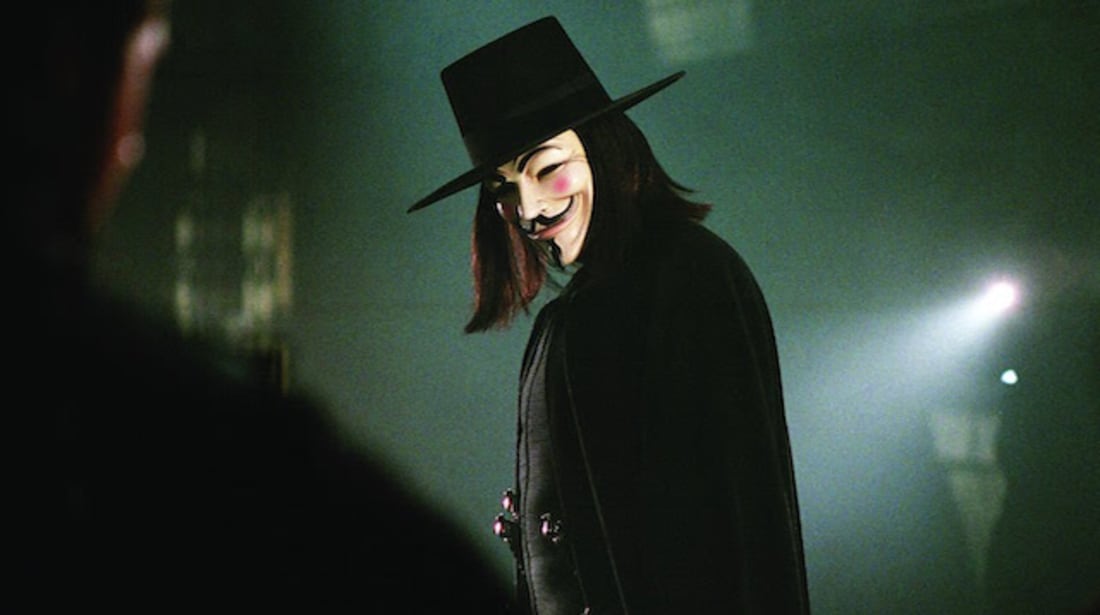When looking back on James McTeigue’s V for Vendetta, I don’t think anyone would have expected to be living in a scarily similar situation 15 years after its release.
During the first lockdown in summer, I decided to watch the film again to fill up some free time. My memory of the plot was vague, but I remembered that I enjoyed the film upon the first watch years previously. From the start of the film, it immerses the viewer in its dystopian world through a voice on a television screen. The man speaking is severe as he talks about America, a country that once “had everything” but in 20 years this has been reduced to a “leper colony”. As he spews more hate, it is clear that this is a futuristic society that has regressed backwards as his speech- broadcast on a popular primetime show- contains prejudices such as Islamophobia, homophobia and xenophobia that are praised by the audience.
This isn’t a lighthearted start, but I was intrigued about what else this shocking world would entail. As I continued to watch the themes became stranger. It is revealed that this society was affected by a deadly virus, referred to a couple of times as a “covid”. Fueled by the media, fear and panic spread quickly. Also, the government used the virus to keep the public in control by enforcing harsh restrictions, led by a conservative dictator. Shots in the film show that signs scatter around London with the words “government curfew” and the law enforcement is high, with peaceful protests being met with hostility and violence from police. The freakiest parallel is that the 2005 film is set in the year 2020.
Obviously, this is a somewhat exaggerated extreme of the events that we have lived through since the beginning of 2020 (thankfully Boris isn’t a dictator). Nonetheless, the coincidences are still weirdly similar, adding another layer of intrigue while watching V for Vendetta. Despite seeing it before, I found the second watch to be a completely different experience considering our current situation today. There were parts where I could relate to the characters, like when civilians were exasperated when watching government announcements, or Natalie Portman’s emotional performance as Evey, as she expresses how numb she feels.
Besides these similarities, the most alluring aspect of the film is the main character, V (played by Hugo Weaving), who wears a long black cloak, a dark wig and an iconic Guy Fawkes mask. It’s no surprise that the idea of an ambiguous vigilante who strikes fear into the heart of a powerful government provides an interesting watch, plus the charming charisma of V lifts the heavy tone of the film. While likeable, he is ultimately an anti-hero as he blows up buildings, breaks into broadcasting corporations and assassinates members of parliament. However, he does so with such style by skillfully wielding knives, that the action scenes are riveting to watch.
Overall, the film has an all star cast including John Hurt, Stephen Fry, Roger Allam and Stephen Rea who give quality performances. While there is a possible element of Stockholm Syndrome concerning the main character Evey that could be seen as questionable today, 15 years later V for Vendetta holds up more than the creators could have predicted and is worth a watch.
By Helen Barber
Feature image: Mental Floss

